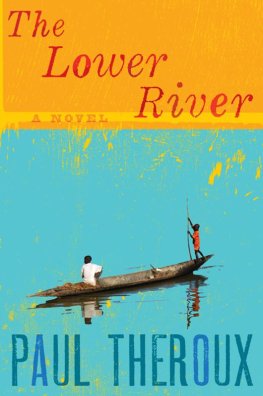Table of Contents
For Sylvia
Why, ever since Adam, who has got to the meaning of his great allegorythe world? Then we pigmies must be content to have our paper allegories but ill comprehended.
HERMAN MELVILLE
PROLOGUE
CENTRAL AFRICA. 1786. A full moon rises over the forest and the Pygmy is born. The Ota dance beneath the stars, and the clearing is beaten smooth by the poundings of their feet. A leopard coughs in the night and the child is given his name, Kau.
Fifteen years later his sister is traded for a girl from a neighboring Ota band. A leaf hut is prepared, and she waits for him to push past the laughing crowd of older women who punch him and kick him and pinch him as he fights his way to the entrance. The girl sees that it is himthe brave one called Leopardand she is happy because this is the young man she had hoped for. She smiles and rolls onto her stomach, giving herself to him in the way that her mother taught her. Blood drips from his torn lips onto her flawless back.
The next day he presents her family with the hindquarters of an okapi. This gift of meat is accepted and the girl becomes his wife. A near decade of happiness and children passes. His wife gives him a daughter, and then she gives him a son.
1810. HE IS HUNTING along the bank of the river when he discovers Kesa canoes hidden in the mangroves. He returns to his camp and finds it destroyed. Kesa warriors have attacked the sleeping band, and his father is among the dozen survivors who are now bound in Spanish trade irons. Twice that number are dead. Mother and wife and son and daughter lie melting in a bed of smoldering coals.
The Kesa march their chain of neck-shackled prisoners to the river and break. He follows with his bow. That evening the Kesa drink palm wine around a bonfire, and from a distance he kills them one by one by one until only a single crazed warrior remains. This last man abandons his slaves, and the Pygmy chases him away from the river and into the forest. At sunrise a poisoned arrow streaks through the trees, and the warrior is paralyzed. He can only stare as the Pygmy approaches.
The captured Ota embrace him, but when he tries to free his people he fails. They realize then that the secret to these shackles died with that final Kesa warrior. He goes to his father, but there is nothing to say.
That same night the hard rains come and the river begins to rise. He is leading them all to higher ground when they surprise a forest elephant. The bull rushes the trail and collides with the chain. Every neck is broken. Colobus monkeys scream down from the treetops. The Pygmy buries the dead in a twisted heap, then he sings an Ota song:There is darkness upon us
darkness is all around
there is no light
but it is the darkness of the forest
so if it really must be
even the darkness is good
FROM ONE NEW moon to the next he wanders. Kesa scouts find him camped near the burrow of an aardvark. They approach and he dives into the earth. It is feared that this little man named Leopard has become a sorcerer. Smoking firebrands are held to the entrance of the burrow, and the Pygmy emerges, red-eyed and coughing.
He is taken to the Kesa village, but the chief is a coward who will not order a sorcerers death. The Pygmy is chained to a post near the market and fed like a dog by superstitious merchants. Still, he does not speak. Five nights later a child dies and there is a panic. The Pygmy is traded from village to village and river to river until finally after many days he reaches the mouth of the Congo. In the delta barracoons he sees his first white men, and though at first he is awed he soon finds them clumsy and disgusting. He is rowed out to the looming square-rigger anchored in the slate and greasy bay, but he is not afraid because inside he is already dead.
A slave ship. There is no room for him among the men, and so the Spanish traders place him belowdecks with the women and children moaning in their portion of the dark and crowded hold. The enormous daughter of a murdered chief has lost her mind to the filth of the overflowing tubs and the galling of her chains. She beats him for his ration of cassava flour, and he latches on to her thick neck. The big woman laughs but cannot shake him loose. His grip constricts tighter and tighter until the giant becomes hysterical and then dies strangled, her death unnoticed until the light of morning. The body is dragged topside by a cursing Sevillano, and the womans caught sisters begin to wail and pull at their hair.
Forty days at sea. The Africans are being made to exercise on the slave deck when rafts of marshgrass are spotted and the first birds appear. Blue water gives to green as happy sailors shoot wake-riding dolphins. The Pygmy is watching them load aim shoot, load aim shoot, when the continent is sighted. He is hungry and thirsty and miserable, but he is also fascinated. To see land and forest again somehow softens his suffering, and he decides then that he wants to survive. The slaves are ordered back into the hold save one of the prettiest girls among them. With her, the Spaniards celebrate.
The ship follows the coast of Spanish Florida, tacking against the Gulf Stream. At the wharf in Pensacola the Africans are scrubbed clean. The Pygmy has worn the same vine belt, the same foul scrap of oiled barkcloth, since the death of his people. He is stripped naked and they force open his mouth, then recoil at the sight of his cut teeth, the canines and incisors that have been filed into sharp points. The shuddering marineros dub him El Canbal, and a yard of coarse osnaburg is pinned around his narrow waist.
On that Pensacola wharf an auctioneer waves a cowskin whip across the sky, dividing the surviving cargo into fieldhand lots of twenty. The Pygmy is among those purchased by an American smuggler who services Georgia plantations. These slaves are coffled and driven inland by the smuggler and his company of angry Choctaws. They follow the Escambia River north forty miles, crossing the unmarked border into the latter-day state of Alabama. They have entered the territory of Mississippi.
Northeast. On a low, swampy stretch of the federal road one of the Choctaws catches a small moccasin swimming in a flooded wagon rut. The snake is threaded into the mouth of an empty rum bottle, the neck capped with a half piece of cork. The warrior wears the bottle on his hip, and later, when two tall and scurvish slaves refuse to continue, he threatens them with the captured serpent until they rise and begin moving. The Pygmy watches this cruelty and understands that to live he must pretend obedience. And so he mimics the good slaves. He walks steadily and never balks, taking two short steps for every long stride of the coffle. The smuggler takes notice and the runt slave becomes his favorite. They have been gone from Pensacola for six days when the smuggler names him Adam.
The Yellowhammer Inn, a stopping house on the federal road to Georgia. The slaves are chained in the barn while the smuggler dines with the innkeeper and his guests. Later that night a Choctaw wakes the Pygmy with a kick, then leads him inside where he is made to dance and flash his teeth for the fascinated travelers.










